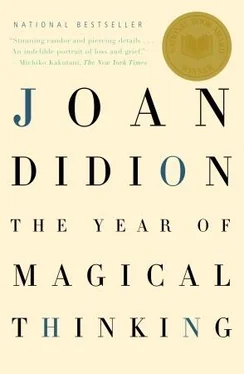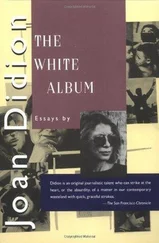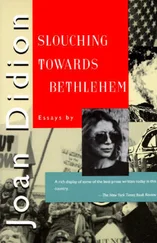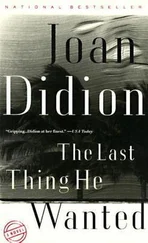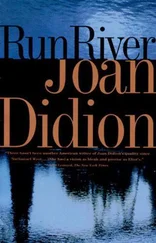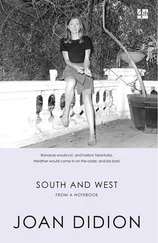Still.
He waited every night to eat with me.
I thought about all this on the Tower C escalator and suddenly it occurred to me: I had spent a minute or two on this escalator thinking about the November night in 2003 before we flew to Paris and about those July nights in 1992 when we would eat late at Coco Pazzo and about the afternoon we had stood around 125th Street waiting for the Louis Farrakhan event that never happened. I had stood on this escalator thinking about those days and nights without once thinking I could change their outcome. I realized that since the last morning of 2003, the morning after he died, I had been trying to reverse time, run the film backward.
It was now eight months later, August 30, 2004, and I still was.
The difference was that all through those eight months I had been trying to substitute an alternate reel. Now I was trying only to reconstruct the collision, the collapse of the dead star.
Isaid I knew what John meant when he said we were not having any fun.
What he meant was something that had to do with Joe and Gertrude Black, a couple we had met in Indonesia in December 1980. We were there on a USIA trip, giving lectures and meeting Indonesian writers and academics. The Blacks had shown up in a classroom one morning at Gadjah Mada University in Jogjakarta, an American couple apparently at home in the remote and in many ways alien tropic of central Java, their faces open and strikingly luminous. “The critical theories of Mr. I. A. Richards,” I remember a student asking me that morning. “What think?” Joe Black was then in his fifties, Gertrude a year or two younger but again, I suppose in her fifties. He had retired from the Rockefeller Foundation and come to Jogjakarta to teach political science at Gadjah Mada. He had grown up in Utah. As a young man he had been an extra in John Ford’s Fort Apache. He and Gertrude had four children, one of whom had been, he said, hit hard by the 1960s. We talked to the Blacks only twice, once at Gadjah Mada and a day later at the airport, when they came to see us off, but each of these conversations was curiously open, as if we had found ourselves stranded together on an island. Over the years John mentioned Joe and Gertrude Black frequently, in each case as exemplary, what he thought of as the best kind of American. They represented something personal to him. They were models for the life he wanted us eventually to live. Because he had mentioned them again a few days before he died I searched his computer for their names. I found the names in a file called “AAA Random Thoughts,” one of the files in which he kept notes for the book he was trying to get off the ground. The note after their names was cryptic: “Joe and Gertrude Black: The concept of service.”
I knew what he meant by that too.
He had wanted to be Joe and Gertrude Black. So had I. We hadn’t made it. “Fritter away” was a definition in the crossword that morning. The word it defined was five letters, “waste.” Was that what we had done? Was that what he thought we had done?
Why didn’t I listen when he said we weren’t having any fun?
Why didn’t I move to change our life?
According to the computer dating the file called “AAA Random Thoughts” was last amended at 1:08 p.m. on December 30, 2003, the day of his death, six minutes after I saved the file that ended how does “ flu ” morph into whole-body infection. He would have been in his office and I would have been in mine. I cannot stop where this leads me. We should have been together. Not necessarily in a classroom in central Java (I do not have a sufficiently deluded view of either of us to see that scenario intact, nor was a classroom in central Java what he meant) but together. The file called “AAA Random Thoughts” was eighty pages long. What it was he added or amended and saved at 1:08 p.m. that afternoon I have no way of knowing.
Grief turns out to be a place none of us know until we reach it. We anticipate (we know) that someone close to us could die, but we do not look beyond the few days or weeks that immediately follow such an imagined death. We misconstrue the nature of even those few days or weeks. We might expect if the death is sudden to feel shock. We do not expect this shock to be obliterative, dislocating to both body and mind. We might expect that we will be prostrate, inconsolable, crazy with loss. We do not expect to be literally crazy, cool customers who believe that their husband is about to return and need his shoes. In the version of grief we imagine, the model will be “healing.” A certain forward movement will prevail. The worst days will be the earliest days. We imagine that the moment to most severely test us will be the funeral, after which this hypothetical healing will take place. When we anticipate the funeral we wonder about failing to “get through it,” rise to the occasion, exhibit the “strength” that invariably gets mentioned as the correct response to death. We anticipate needing to steel ourselves for the moment: will I be able to greet people, will I be able to leave the scene, will I be able even to get dressed that day? We have no way of knowing that this will not be the issue. We have no way of knowing that the funeral itself will be anodyne, a kind of narcotic regression in which we are wrapped in the care of others and the gravity and meaning of the occasion. Nor can we know ahead of the fact (and here lies the heart of the difference between grief as we imagine it and grief as it is) the unending absence that follows, the void, the very opposite of meaning, the relentless succession of moments during which we will confront the experience of meaninglessness itself.
As a child I thought a great deal about meaninglessness, which seemed at the time the most prominent negative feature on the horizon. After a few years of failing to find meaning in the more commonly recommended venues I learned that I could find it in geology, so I did. This in turn enabled me to find meaning in the Episcopal litany, most acutely in the words as it was in the beginning, is now and ever shall be, world without end, which I interpreted as a literal description of the constant changing of the earth, the unending erosion of the shores and mountains, the inexorable shifting of the geological structures that could throw up mountains and islands and could just as reliably take them away. I found earthquakes, even when I was in them, deeply satisfying, abruptly revealed evidence of the scheme in action. That the scheme could destroy the works of man might be a personal regret but remained, in the larger picture I had come to recognize, a matter of abiding indifference. No eye was on the sparrow. No one was watching me. As it was in the beginning, is now and ever shall be, world without end. On the day it was announced that the atomic bomb had been dropped on Hiroshima those were the words that came immediately to my ten-year-old mind. When I heard a few years later about mushroom clouds over the Nevada test site those were again the words that came to mind. I began waking before dawn, imagining that the fireballs from the Nevada test shots would light up the sky in Sacramento.
Later, after I married and had a child, I learned to find equal meaning in the repeated rituals of domestic life. Setting the table. Lighting the candles. Building the fire. Cooking. All those soufflés, all that crème caramel, all those daubes and albóndigas and gumbos. Clean sheets, stacks of clean towels, hurricane lamps for storms, enough water and food to see us through whatever geological event came our way. These fragments I have shored against my ruins, were the words that came to mind then. These fragments mattered to me. I believed in them. That I could find meaning in the intensely personal nature of my life as a wife and mother did not seem inconsistent with finding meaning in the vast indifference of geology and the test shots; the two systems existed for me on parallel tracks that occasionally converged, notably during earthquakes. In my unexamined mind there was always a point, John’s and my death, at which the tracks would converge for a final time. On the Internet I recently found aerial photographs of the house on the Palos Verdes Peninsula in which we had lived when we were first married, the house to which we had brought Quintana home from St. John’s Hospital in Santa Monica and put her in her bassinet by the wisteria in the box garden. The photographs, part of the California Coastal Records Project, the point of which was to document the entire California coastline, were hard to read conclusively, but the house as it had been when we lived in it appeared to be gone. The tower where the gate had been seemed intact but the rest of the structure looked unfamiliar. There seemed to be a swimming pool where the wisteria and box garden had been. The area itself was identified as “Portuguese Bend landslide.” You could see the slumping of the hill where the slide had occurred. You could also see, at the base of the cliff on the point, the cave into which we used to swim when the tide was at exactly the right flow.
Читать дальше
Конец ознакомительного отрывка
Купить книгу
